L'Aquila, the capital of Abruzzo, is a city rich in history, culture and natural beauty. Located in the heart of Italy, it offers a wide range of attractions ranging from historical monuments to breathtaking landscapes. If you are planning a visit, here is a detailed guide on what to see in L'Aquila.
One of L'Aquila's most iconic attractions is undoubtedly the Basilica of Santa Maria di Collemaggio. Founded in 1287 by Pietro da Morronewho later became Pope Celestine V, this basilica is an extraordinary example of Romanesque-Gothic architecture. Its façade, decorated with geometric motifs in white and pink, is a veritable architectural masterpiece that immediately captures the attention of anyone who looks at it. Every detail of the façade tells a story of artistic mastery and religious devotion.
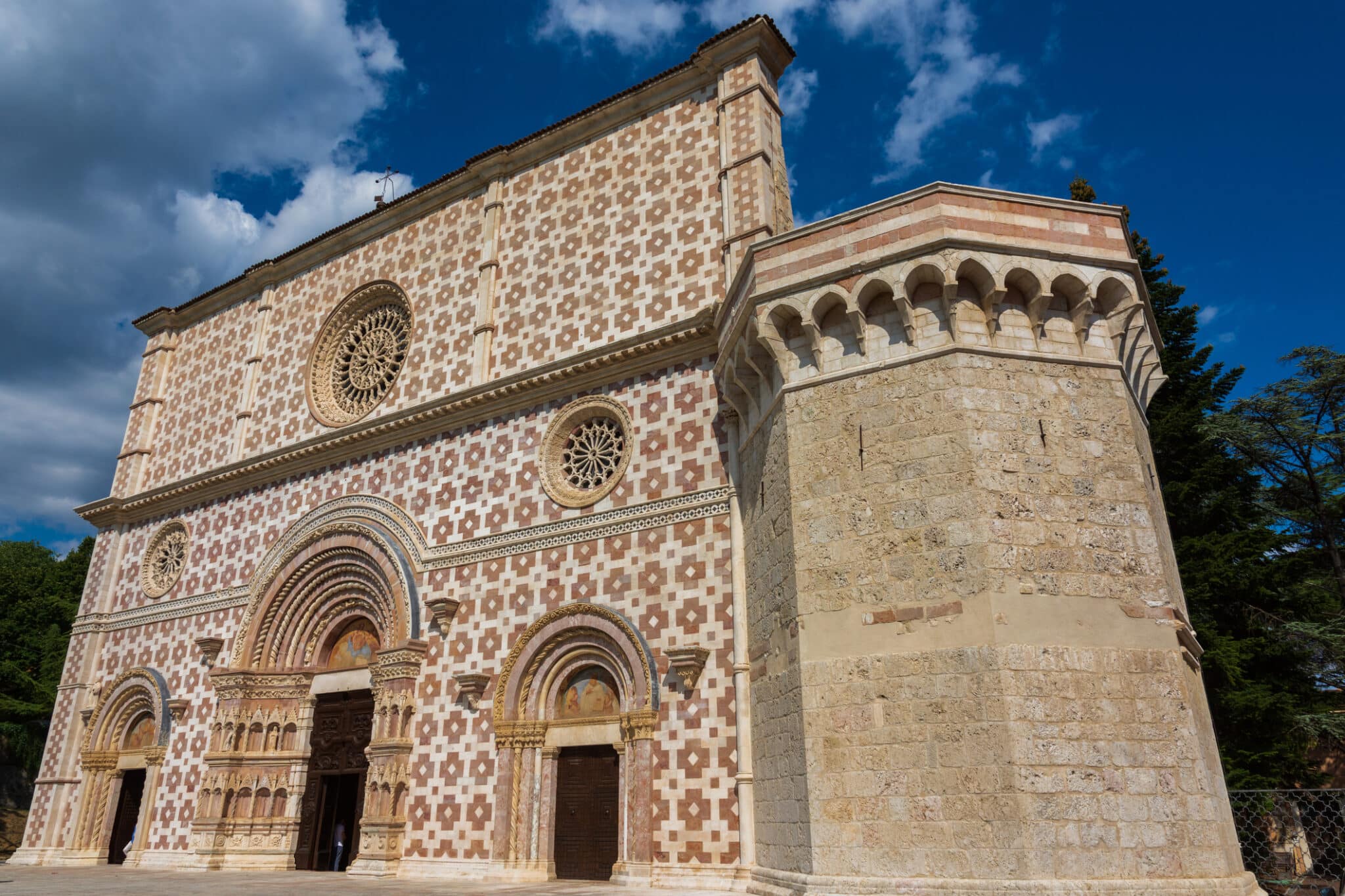
L'Aquila, Santa Maria di Collemaggio
The interior of the basilica is equally impressive, with frescoes and decorations that tell centuries of history. The naves are adorned with works of sacred art from various eras, offering a journey through the history of religious art. The basilica also houses the mausoleum of Pope Celestine V, a place of great spiritual and historical importance. Every year, at the end of August, the Celestinian Pardon, a religious festival that attracts pilgrims from all over the world. This event, which includes processions and liturgical celebrations, has been recognised as an Intangible Heritage of Humanity by UNESCO.
Built in the 16th century during Spanish rule, the Strong Spanish is one of the most imposing fortifications in Italy. This massive castle, with its mighty walls and moat, was designed to resist sieges and invasions. The Forte's structure is a perfect example of Renaissance military architecture, characterised by a square plan and angular bastions that increase its defensibility. Every corner of the Fort tells stories of battles and military strategies, making the visit an educational as well as fascinating experience.
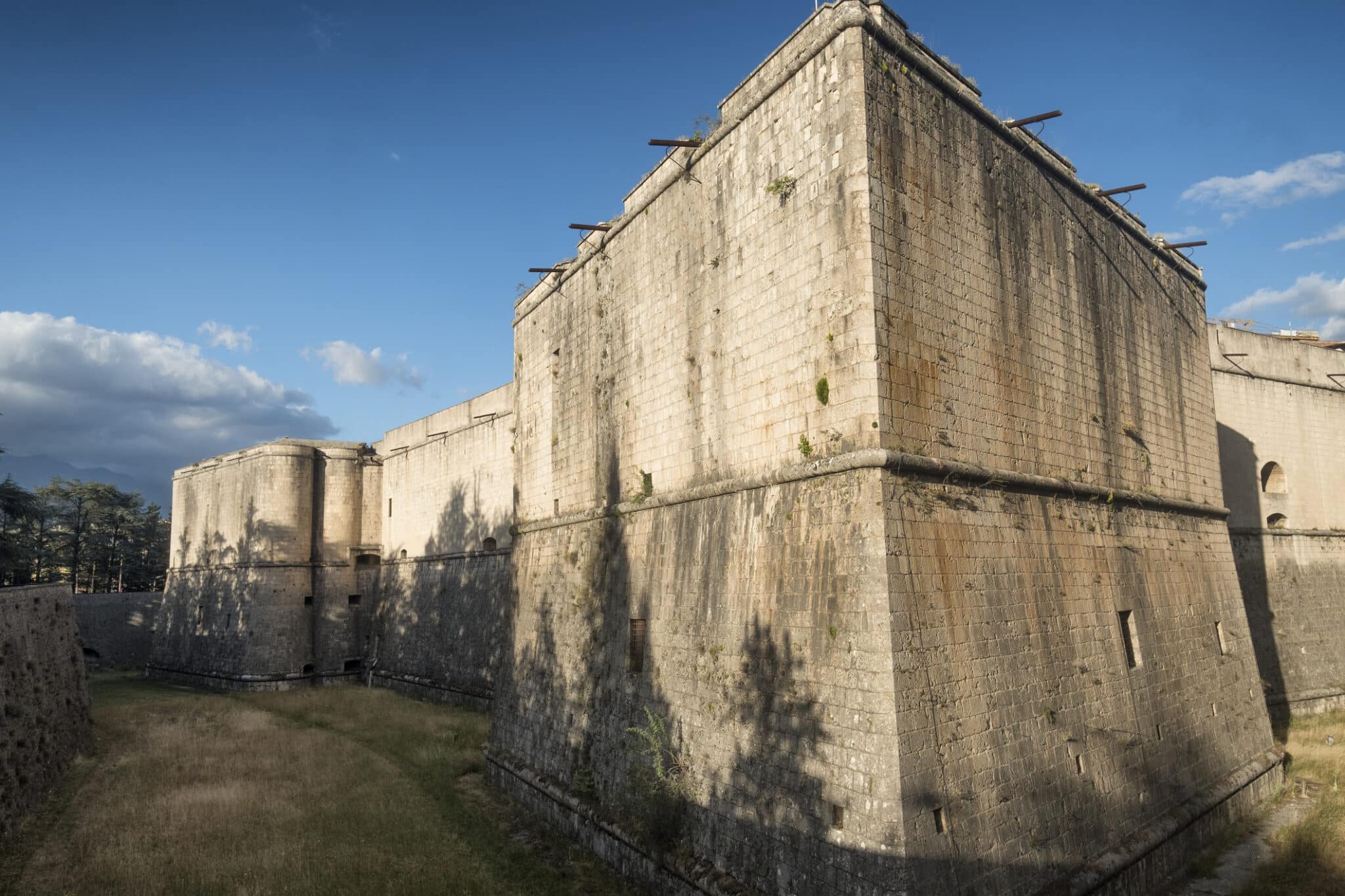
L'Aquila Abruzzo, Italy exterior of the historic castle known as Forte Spagnolo, built in the 16th century
Today, the Fort hosts the Abruzzo National Museumwhich boasts an impressive collection of art and archaeological finds. The museum rooms display works of art ranging from the Middle Ages to the Renaissance, as well as a section dedicated to the prehistory of the region. Walking around the ramparts of the Fortress offers a panoramic view of the city and the surrounding mountains, making the visit an unforgettable experience. The museum also organises temporary exhibitions and cultural events, making each visit unique and interesting.
Another unmissable stop in L'Aquila is the Fountain of the 99 Spouts. Built in 1272, this historic fountain is a symbol of the city. Composed of 99 masks from which the water flows, represents the 99 castles that, according to legend, contributed to the foundation of L'Aquila. Each mask is unique, with different expressions that fascinate visitors. The variety of expressions and details sculpted into the masks makes this fountain a unique work of art.
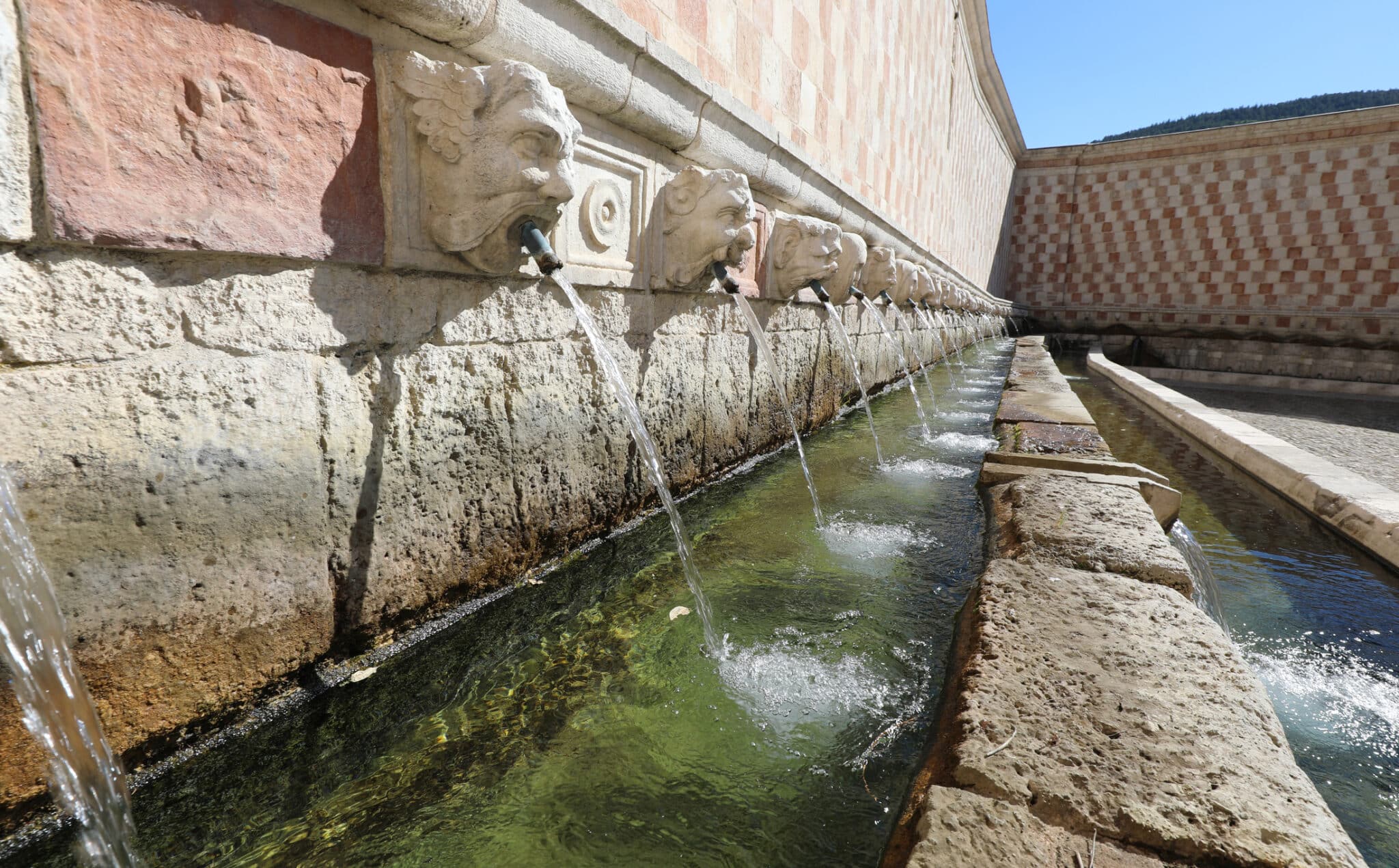
Detail of the famous fountain in L'AQUILA City in central Italy called FONTANA DELLE 99 CANNELLE
The fountain is a perfect place for a relaxing breakimmersed in history and the sound of running water. Situated in a quiet square, it is surrounded by historical buildings that contribute to the atmospheric atmosphere. The Fountain of the 99 Spouts is not only a masterpiece of medieval hydraulic engineering, but also a meeting place for locals and tourists. A visit to this fountain offers a unique opportunity to reflect on the city's history and appreciate the beauty of its ancient traditions.
For lovers of nature, a visit to L'Aquila would not be complete without exploring the Gran Sasso and Monti della Laga National Park. This park, which covers a vast area of over 150,000 hectares, offers a variety of outdoor activities that cater for every type of hiker and adventure lover. From trekking and horse riding to climbing and birdwatching, the park is a true paradise for those seeking to immerse themselves in unspoilt nature. The hiking trails are well-marked and offer breathtaking views ranging from rolling hills to imposing peaks.
The park houses the Gran Sasso of Italy, the highest mountain in the Apennines, with its highest peak, Corno Grande, reaching 2,912 metres. This mountain not only offers spectacular viewsbut also represents an irresistible challenge for experienced hikers and mountaineering enthusiasts. During the winter, the Gran Sasso turns into an ideal destination for winter sports, with ski resorts such as Emperor Camp attracting visitors from all over Italy. Campo Imperatore is also known for its astronomical observatory and for having been Benito Mussolini's refuge during World War II.
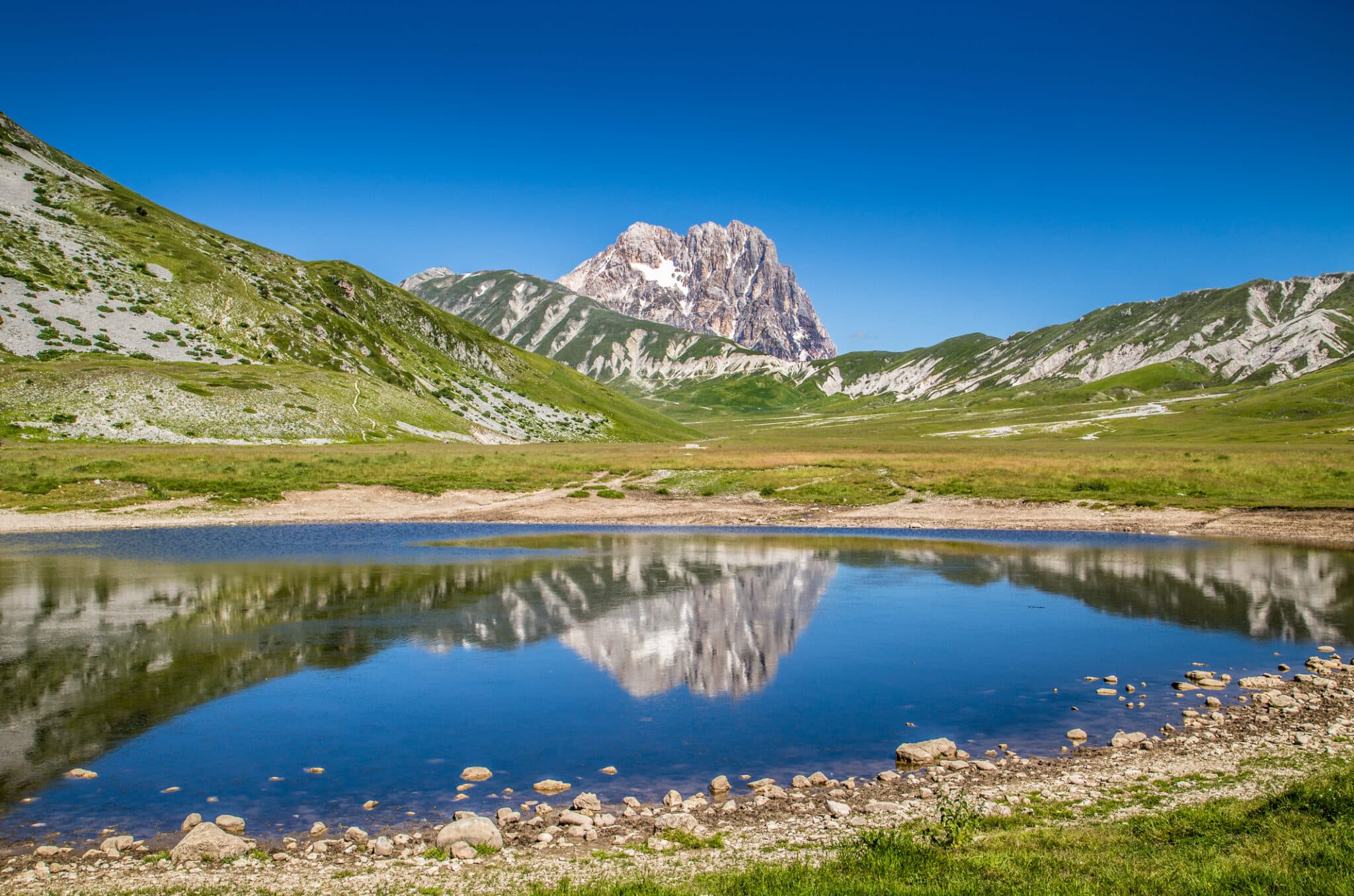
Gran Sasso, Campo Imperatore plateau, Abruzzo, Italy. Beautiful landscape with the summit of the Gran Sasso d'Italia on the Campo Imperatore plateau in the Apennines, Abruzzo, Italy.
The Gran Sasso and Monti della Laga National Park is famous for its unique flora and fauna. Rare species of plants and animals can be found here, many of them endemic to the Apennines. Among the animals, the Apennine wolf, golden eagle, Abruzzo chamois and deer stand out. The park is also an important nesting area for many species of migratory birds. The beech forests, alpine meadows and rocky areas create a diverse habitat that offers refuge to a rich biodiversity. This makes every excursion an opportunity to get a closer look at the untouched wilderness.
The beating heart of L'Aquila is undoubtedly the Cathedral Squarea large square surrounded by historic buildings and open-air cafés. This open space is the centre of the city's social and cultural life, where residents and tourists meet to relax and enjoy the vibrant atmosphere. The square is home to the Cathedral of Saints Maximus and Georgean impressive structure that has undergone several restorations over the centuries, especially after the devastating 2009 earthquake. The cathedral is an important place of worship and an example of resilience and reconstruction.
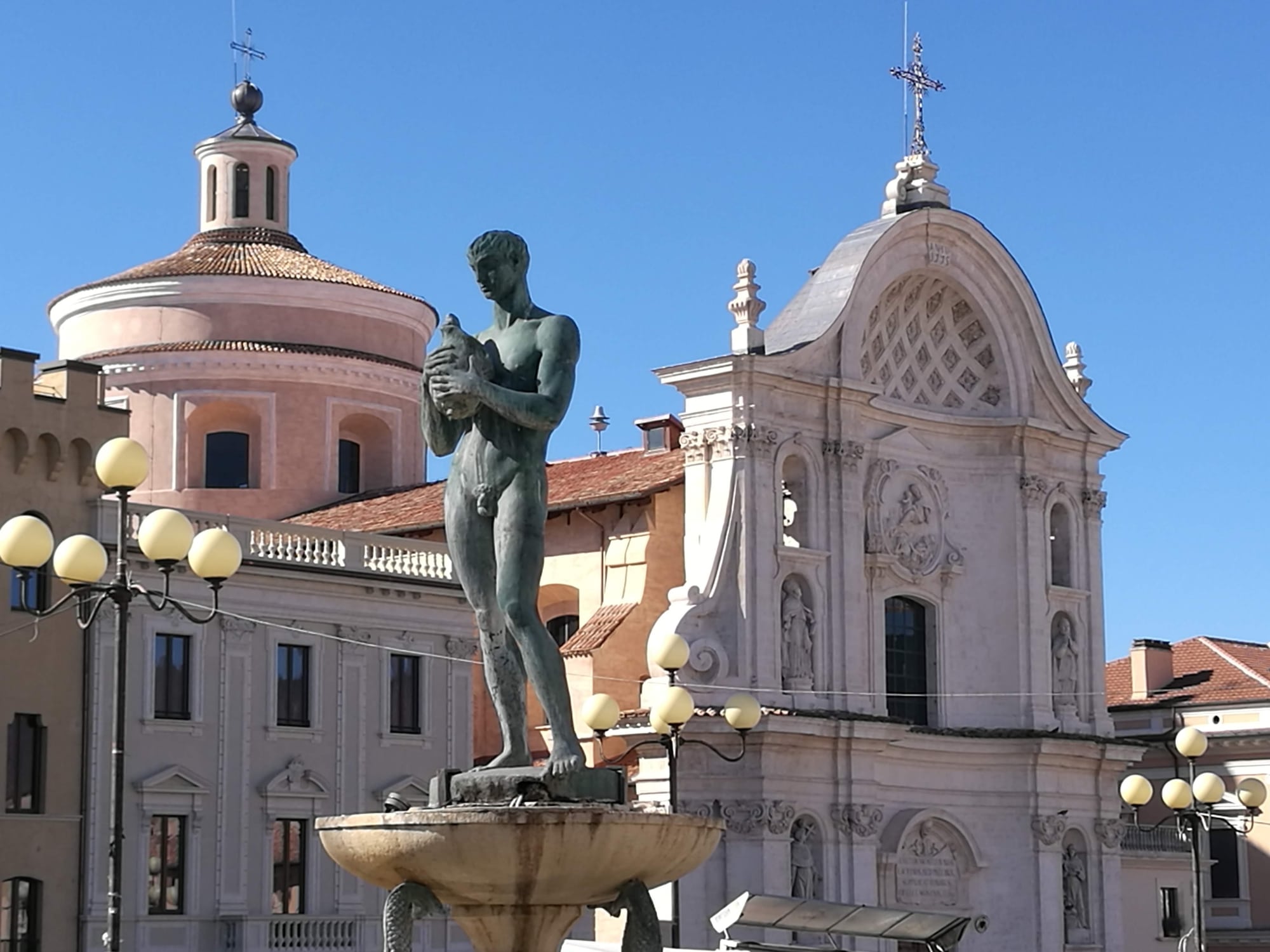
Piazza del Duomo in L'Aquila in Abruzzo, Italy.
The historic centre of L'AquilaDespite the damage caused by the earthquake, it retains a unique charm with its narrow alleys, cosy squares and historic churches. Strolling through the streets, one can discover craft shops selling typical products and unique souvenirs. Local restaurants offer a traditional cuisine Abruzzo that will delight the palate of any visitor. The historic centre is under continuous reconstruction, with numerous open building sites working to restore the city to its former glory. This combination of history and modernity makes L'Aquila a fascinating city to explore.
Strolling through the streets of the historic centre, one can discover picturesque views that tell the story of everyday life in the city. From flower-filled balconies to colourful building facades, every corner of L'Aquila offers something unique and interesting. The squares and alleyways are often enlivened by local markets, cultural events and shows that make the visiting experience always different and engaging. Post-earthquake reconstruction has also led to the creation of modern and functional spaces that are perfectly integrated into the historical fabric of the city.
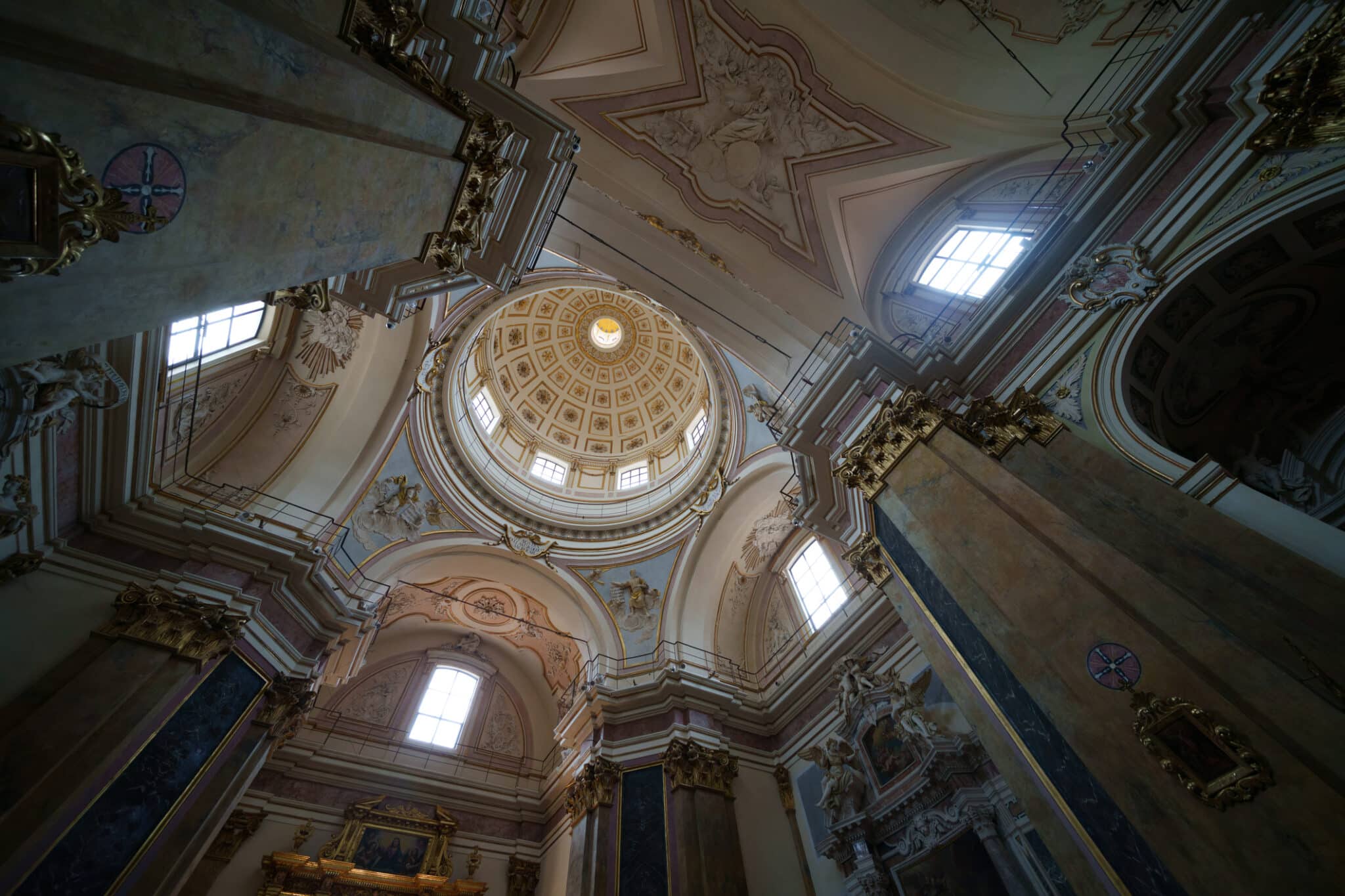
L'Aquila Cathedral, Italy. Interior of the Cathedral of L'Aquila, Abruzzo, Italy
Located inside the Spanish Fort, the Abruzzo National Museum is a must for anyone wanting to learn more about the history and culture of the region. The museum exhibits a wide range of works of artfrom medieval paintings to modern sculptures, offering a broad overview of the artistic and cultural evolution of Abruzzo. Each room of the museum is dedicated to a specific historical period, with exhibits ranging from prehistory to the Middle Ages and up to modern times. This makes a visit to the museum a true journey through time.
One of the museum's main attractions is the Castle Mammotha perfectly preserved mammoth skeleton from prehistoric times, discovered near L'Aquila. This find offers a fascinating window into the remote past of the region and the creatures that once inhabited it. The museum also offers temporary exhibitions covering various aspects of Abruzzo culture and history. These exhibitions change regularly, ensuring that each visit to the museum offers something new and interesting to discover.
In addition to the permanent exhibitions, the Abruzzo National Museum is a dynamic cultural centre that organises events, conferences and workshops. These activities aim to promote knowledge and appreciation of Abruzzo culture, involving both residents and tourists. The museum also collaborates with other cultural institutions and museums, both nationally and internationally, to bring exhibitions and events of global significance to L'Aquila. This commitment to cultural promotion makes the Abruzzo National Museum a lively and stimulating place for anyone interested in history and culture.
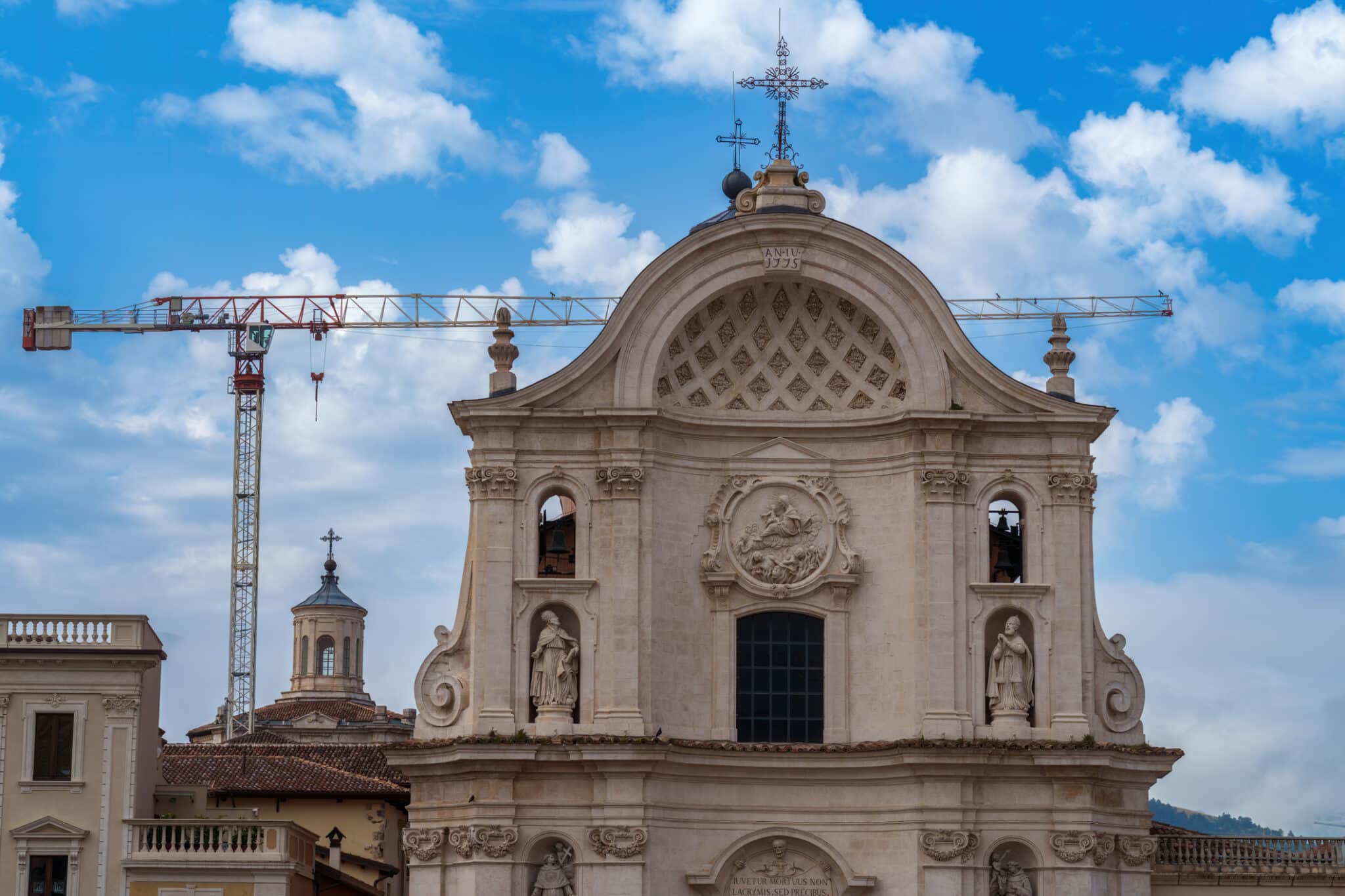
L'Aquila Cathedral, Italy. Exterior of L'Aquila Cathedral, Abruzzo, Italy
L'Aquila is a city with a rich and varied heritage, capable of captivating visitors with its millennial history, vibrant culture and breathtaking natural beauty. Every corner of this city tells a unique story, from historical monuments such as the Basilica of Santa Maria di Collemaggio and the Strong Spanishto the enchanting landscapes of the Gran Sasso and Monti della Laga National Park. Its Cathedral Square and the historic centre offer an authentic and immersive experience, allowing you to immerse yourself in daily life and local traditions.
For those who are passionate about art and history, the Abruzzo National Museum inside the Spanish Fort is a must-see, with its collections ranging from prehistory to modern art. Nature lovers will find in the Gran Sasso and Monti della Laga National Park a true paradise for hiking and outdoor sports, while those seeking a moment of relaxation can enjoy the peaceful atmosphere of the Fountain of the 99 Spouts.
L'Aquila is a destination that knows how to surprise and enchant, offering unforgettable experiences to all its visitors. Whether you are looking for outdoor adventure, an immersion in history or a place to relax and enjoy the view, L'Aquila has something special to offer.
1. What is the best time to visit L'Aquila? The best time to visit L'Aquila is during spring and autumn, when the climate is mild and pleasant.
2. How can I get to L'Aquila? L'Aquila is easily reached by car, bus or train from Rome and from other Italian cities. The nearest airport is Pescara.
3. What are the culinary specialities of L'Aquila? L'Aquila's culinary specialities include lamb alla cacciatora, arrosticini, and L'Aquila PDO saffron dishes.
4. Are there family-friendly activities in L'Aquila? Yes, L'Aquila offers many family-friendly activities, including excursions in the Gran Sasso National Park, museum visits and walks in the historic centre.
5. Where can I stay in L'Aquila? L'Aquila offers a variety of accommodation options, from bed and breakfasts to luxury hotels, many of them located close to the city's main attractions.
We are a young Web Agency with more than 10 years of experience, we love travelling and discovering new places, that is why we write every day on Italia Delight our travel site.

Italia Delight is your definitive guide to Italian restaurants, offering a comprehensive directory and web marketing services to enhance every dining experience. Discover, taste and connect with Italian tradition.
2024 G Tech Group S.R.L.S. - Via di Gagia 22,38086 Giustino (TN) - P.IVA 02743570224
Project in collaboration with Gianluca Gentile e Glocal Consulting
To provide the best experiences, we and our partners use technologies like cookies to store and/or access device information. Consenting to these technologies will allow us and our partners to process personal data such as browsing behavior or unique IDs on this site and show (non-) personalized ads. Not consenting or withdrawing consent, may adversely affect certain features and functions.
Click below to consent to the above or make granular choices. Your choices will be applied to this site only. You can change your settings at any time, including withdrawing your consent, by using the toggles on the Cookie Policy, or by clicking on the manage consent button at the bottom of the screen.